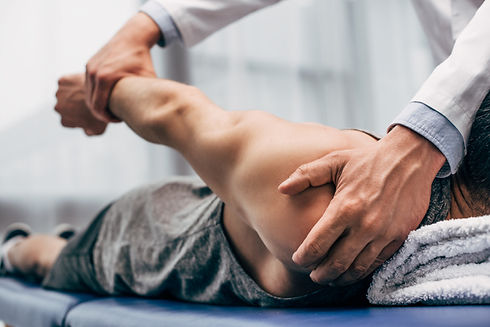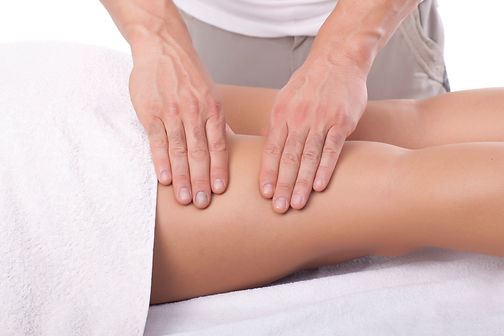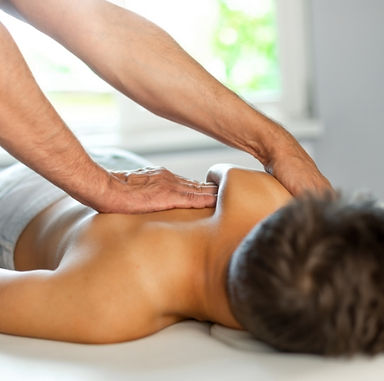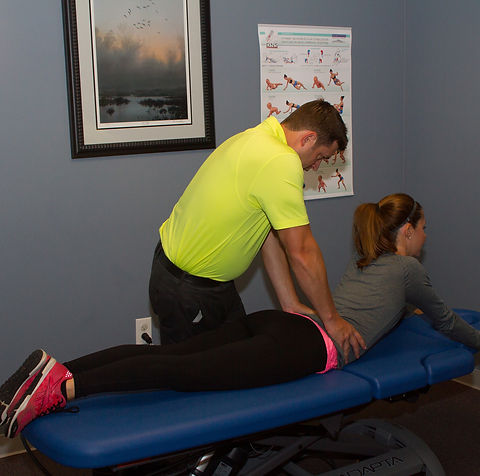

Services
My Medical Approach to Treat Patients.
I use an integrated medical approach to treat patients. For the past 12 years I successfully owned and operated the "Enhanced Health Center," a health and wellness clinic located in the BC Lower Mainland and Alberta. I then decided to move to the interior of British Columbia to integrate my model of wellness to patients. Staying current in my profession is very important to me. I've added many skills since graduating from the West Coast College of Massage Therapy in 1995. These skills come from training in the following:
Muscle Energy Technique
Muscle energy is the manipulation of the skeletal system. I place the patient in a specific position, and then he/she tries to come out of that position while I resist their movement. The muscles then pull the bones into correct alignment.


Muscle Balance and Function
This technique corrects improper posture through exercise. I develop a personalized program according to the specific postural imbalance of a patient. Each exercise works with small muscle groups supporting the spine. By retraining the nervous system to activate muscles in the proper sequence, pain caused by improper posture is relieved. I develop a set of customized exercises for each individual which they should perform 30 minutes daily for optimal results.
Craniosacral I and II
The craniosacral system has a profound effect on health and well-being. The cerebrospinal fluid pressure has a rhythmical motion in the craniosacral system, affecting the skeletal and nervous system of your body. As a therapist, I "palpate" the motion of this fluid to relieve conditions such as headaches, ear infections, dizziness, tinnitus, TMJ and dyslexia. My touch is extremely sensitive. I am able to diagnose the movement of the system as a whole by locating critical points of restriction.


Lymphatic Drainage
The lymphatic system carries a clear fluid throughout the body. This is part of the waste disposal and nutrient supply system that interacts with the blood stream. By applying a circular pumping and draining motion, the drainage paths are cleared. The benefits of treating my patients with this technique, include reducing edema, calming, pain reduction, and improving the immune system.
Neuromuscular therapy (NMT)
This is also called trigger point myotherapy. The American Academy of Pain Management recognizes this form of massage therapy as an effective treatment for back pain caused by soft tissue injury (such as a muscle strain).


Myofascial Tx
This is a safe and very effective hands-on technique that involves applying gentle sustained pressure into the Myofascial connective tissue restrictions to eliminate pain and restore motion. This essential "time element" has to do with the viscous flow and the piezoelectric phenomenon: a low load (gentle pressure) applied slowly will allow a viscoelastic medium (fascia) to elongate.
Manual Therapy Techniques
The term "manual therapy" refers to hands-on treatment of muscles, tendons, ligaments, and joints. Human touch is an essential ingredient in our treatment philosophy and approach, and for good reason. Patients respond positively to hands-on work when combined with exercise and education. This leads to faster recovery and less out-of-pocket expenses. Manual therapy encompasses a broad group of sophisticated techniques performed by hand. These may include mobilizations or manipulations of soft tissue and skeletal joints. Manual therapy techniques aim to decrease pain and increase function.


Deep Tissue
Deep tissue massage techniques are used to break up scar tissue and physically break down muscle \knots\ or adhesions (bands of painful, rigid tissue) that can disrupt circulation and cause pain, limited range of motion, and inflammation.
Deep tissue massage usually focuses on a specific problem, such as chronic muscle pain, injury rehabilitation, and the following conditions:
-
Low back pain
-
Limited mobility
-
Recovery from injuries (e.g. whiplash, falls)
-
Repetitive strain injury,
-
Postural problems
-
Muscle tension in the hamstrings, glutes, IT band, legs, quadriceps, rhomboids, upper back
-
Osteoarthritis pain
-
Sciatica
-
Piriformis syndrome
-
Tennis/Golfer's elbow
-
rotor cuff injuries
-
Upper back or neck pain
Soft Tissue Release
Soft tissue release (STR) is a hands-on manual therapy used to assess and treat the tissue of the body. The soft tissues of the body (muscle, tendon, fascia and ligaments) are prone to acute and chronic injury, which leads to swelling, adhesions and fibrosis (scarring) of the tissue. This type of injury often results in pain, loss of mobility, strength, and function. Soft tissue release targets specific areas of tension within an individual muscle with the aim of removing scar tissue and adhesion to relieve muscular tension and pain.
. The technique involves performing a precise stretch on a certain muscle through multiple planes of movement. The therapist identifies the area of tension through palpation and this area becomes the target for stretching.

How Soft Tissue Release Works
First, the therapist applies one hand at one end of the muscle to ‘lock’ or ‘fix’ that part of the muscle to the underlying structures[i]. Then the therapist applies deep pressure with the other hand or massage tool typically using lotion or oil to ease the friction of the movement.
The muscle is actively or passively stretched throughout the technique. Soft tissue release works by breaking down these muscle adhesions and improving blood flow to the area to re-establish optimal length, resilience, and function of the muscles.
Soft tissue release can be used on both acute and chronic injuries with relatively quick results. It can be beneficial for clients with any level of activity and mobility to treat pain and dysfunction. While soft tissue release can be beneficial in treating many musculoskeletal conditions, it should be used in conjunction with other treatment approaches to ensure a reduction and/or elimination of symptoms.
End Range Loading
What can End Range Loading Treat?
End Range Loading is a Massage Therapy technique that helps relieve neurological pain caused by vertebral disc injuries, nerve entrapments, tendon injuries, or connective tissue adhesions. Some of the common terms used for these conditions are:
-
Intervertebral Disc (IV) Herniations
-
Slipped Disc
-
Sciatica
-
Piriformis Syndrome
-
Thoracic Outlet Syndrome
-
Myofascial Adhesions
-
Nerve Stenosis


End Range Loading techniques and nerve mobilizations help relieve pain and discomfort. The techniques are not limited to treating just nerve tissue, but also bone and other connective tissues like blood vessels and tendons.
What is End Range Loading Therapy or Techniques?
End Range Loading Techniques (ERL) is essentially taking tissue (nerves, tendons, discs, connective tissue) into a position of tension and then applying an overpressure to stretch and/ or glide the affected tissue to assist with improved function and reduced pain. This technique can help reshape slipped or herniated discs, remove nerve entrapments, speed up tendon strain healing, and release chronic myofascial adhesions.
Is End Range Loading Painful?
End Range Loading techniques are all performed within patient tolerance and closely monitored as the procedures are performed. A common response is that it feels like a “good hurt” If any techniques become painful they are stopped immediately.
How does the technique work?
Simply put this technique helps provide oxygen and nutrients to damaged or compressed tissue. The end result is improved healing and reduced pain. For the more technically minded we’ll explain further. Your body has a unique and complex environment called connective tissue…aka the extra-cellular matrix (ECM). This connective tissue surrounds and nourishes every structure in the body. (nerves, tendons, discs, organs, bones)
The easiest way to understand connective tissue is that it is much like a sponge that allows oxygen and nutrient rich blood to get into all the cells of the body to help keep them at optimum health and function. Often when the area is damaged the flow of this oxygen and nutrient rich blood is compromised thus setting up a cycle of pain and dysfunction. Because the tissue is damaged it becomes harder for healing oxygen and nutrients to get through. Think of a sponge that is filled with dirty water. In order to get clean water into the sponge you have to wring out the dirty water first. Same principle applies here.
End Range Loading essentially is like wringing out old fluid from the damaged area thus making room for fresh fluid to fill the ECM space thus allowing for improved healing, reduced pain, and improved function.